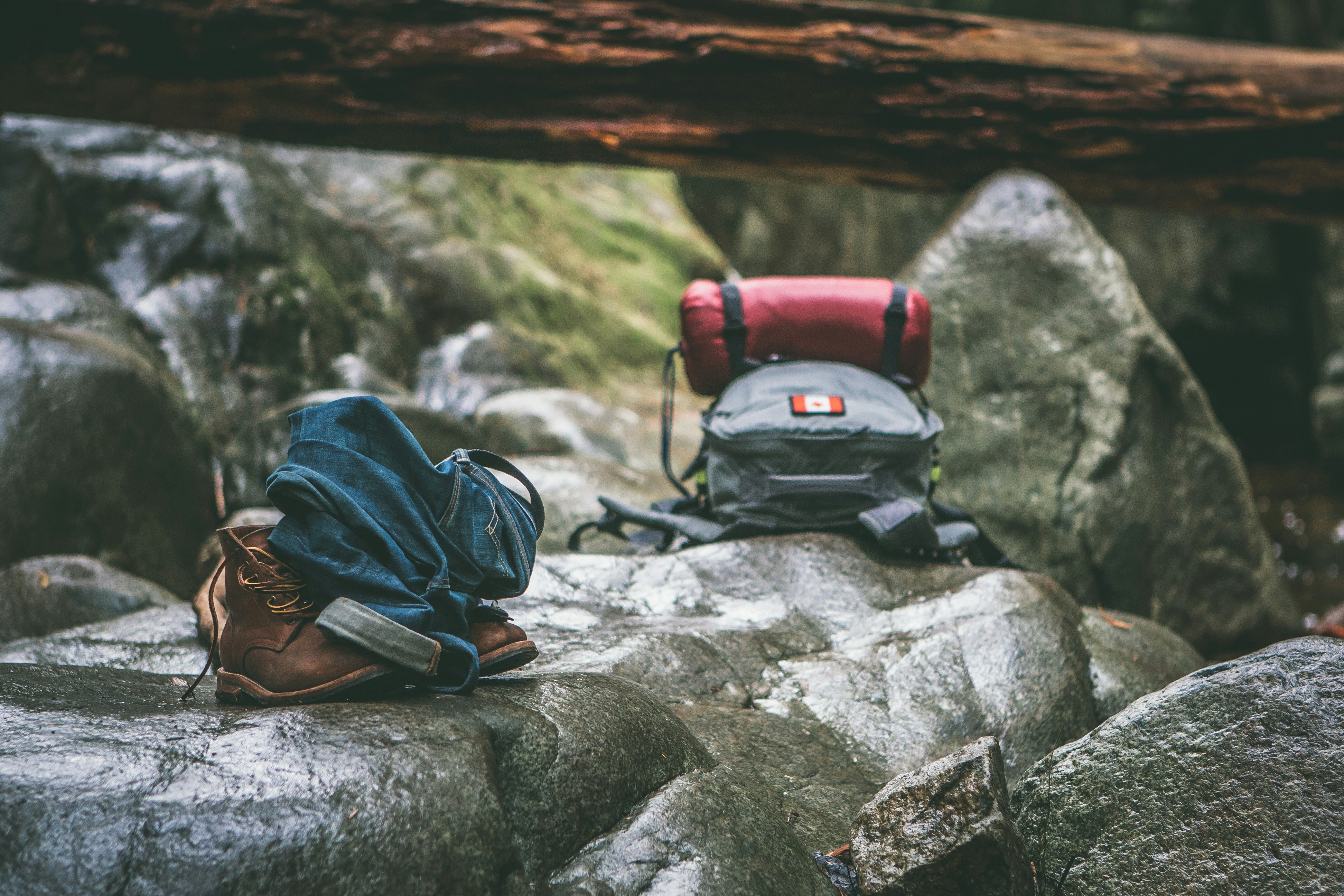Gear Guide: Rucking Packs and Weighted Vests
· 6 min read · rory@getrucky.com
gear ruck weighted vest

I've bought gear too fast and too cheap. Here's the short list that actually makes training better.
If we were having coffee and you asked, "What do I actually need to start?" I'd say: less than you think, but it needs to fit well. Good gear disappears when you move. Bad gear nags you into quitting. Below is a plain-English guide to what matters, why, and how to test it in your living room before your first mile.
Weighted vests: compact power, zero fuss
Vests shine when space is tight (treadmills, stairs) or when you pair walking with bodyweight work. The best vest feels like a hug—not a bear hug. Aim for a snug, even wrap that lets you take a full, easy breath.
What to look for: adjustable plates (so you can actually progress), secure closures that don’t creep, breathable panels that won’t turn you into a radiator. Front/back balance should feel even—no sliding plates, no rib pinch when you inhale.
Quick fit drill: 30 marching steps in place, then 10 deep breaths. If it bounces or pinches, adjust. Still bouncing? Tighten lower first, then upper. If your shoulders are doing all the work, loosen the top and re-seat the vest lower on your torso.
Ruck packs: built for distance
For outdoor mileage and hiking carryover, a pack is king. You want the weight high and close to your back to reduce torque. A simple frame sheet/stiffener helps, and padded straps avoid hot spots once you’re past 30–45 minutes.
What to look for: padded shoulder straps, a frame sheet or stiffener, and interior sleeves that keep plates/bricks from sloshing. A hip belt can be great for longer or heavier days, but you shouldn’t need one to survive a 30–40 minute session.
Quick fit drill: Load the pack, cinch shoulder straps until the pack doesn’t sway when you hop gently. Walk 20 steps and listen for clunking—if you hear it, the weight isn’t anchored. Use towels or foam to eliminate voids and lock it in.
Shoes and socks: blister insurance
Stable walking/hiking shoes are perfect for roads and paths; trail shoes grip better off-road. Socks do more than people think—merino or technical synthetics wick and cushion; cotton is for campfires. A pea-sized dab of lube on known hot spots can save your day.
Budget vs premium: where to spend
- Spend on fit and stability: vest closures/adjustability, pack structure/straps.
- Save on accessories: start with simple iron plates, bricks, or water jugs before fancy ruck plates. Yes4All ruck plates or their adjustable version offer great value for money.
- Upgrade gradually: once you’re consistent 3x/week for a month, you’ll know what you actually need.
- Use the calorie calculator to sanity-check that your upgrades match your training goals.
- Related reads: Form & Fitting · How Much Weight
Mini buyer’s guide
- For apartment/treadmill: a breathable vest with quick micro-adjustments, 10–20 lb starter plates.
- For outdoor mixed terrain: a 20–26L ruck with frame sheet, wide straps, and an internal plate sleeve.
- For longer treks: add a removable hip belt and consider trail shoes with rock plates.
Common mistakes (learned the hard way)
- Too loose: bounce wastes energy and rubs skin. Tighten until the load moves with you.
- Too low: weight hanging mid-back or belly = cranky posture. Keep it high and close.
- Ignoring socks: swap to wool/synthetic and watch blisters vanish.
- Skipping test walks: 2 minutes indoors will reveal 90% of fit problems. Fix before the door opens.
Why it matters (data)
Terrain and grade significantly increase energy cost[5]; secure gear keeps that cost going into forward progress, not oscillation. In a real‑world 6.4 km course, adding a balanced torso load (~30% body mass) raised total oxygen uptake to ~1.35× unloaded walking[1]. Validated USARIEM models estimate the metabolic cost of backpacks[2] and weighted vests[3] across loads and speeds. Load carriage also increases peak impact forces and loading rates linked to bone stress injury risk—good fit and stable load placement help keep mechanics crisp as you tire[4].
References
- Weyand, P.G. et al. (2021). Real‑world walking economy on a 6.4 km course. J Appl Physiol. Open access.
- Looney, D.P. et al. (2022). Modeling the Metabolic Costs of Heavy Military Backpacking. Med Sci Sports Exerc. Open access.
- Looney, D.P. et al. (2024). Metabolic Costs of Walking with Weighted Vests. Med Sci Sports Exerc. PubMed.
- ROTC cadet ruck marching study (2020). Lower‑extremity loading increases with ruck marching. PubMed.
- Complex Terrain Load Carriage Energy Expenditure (2018). MSSE.
- Review: Physiological impact of load carriage (2022). Open access.
Additional perspectives
- Zone 2 training (context): Peter Attia’s guide to Zone 2 and why it matters for mitochondrial health/aerobic capacity. Read the guide.
- Popular commentary: Gary Brecka on weighted vests and walking—motivational perspective, not peer‑reviewed research. Watch on YouTube.
Affiliate Disclosure: This post contains affiliate links. If you purchase through our Amazon links, we may earn a small commission at no extra cost to you. This helps support our content creation and app development. We only recommend products we've researched or would use ourselves.
Enjoyed this guide? Download the app to track your rucks, calories, and progress: iOS · Android